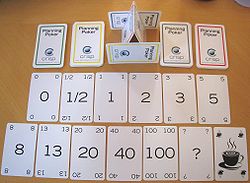I've had experiences in the past where different developers will give different qualities of estimates--which then have to be consolidated into a single project plan--only with a twist.
- One developer will look at a task, figure it sounds like an easy problem, and estimate a couple of hours.
- Another developer will look at a task, figure it sounds easy, but recognize that there could be additional complexity or clarification along the way, so planning for contingencies, estimate a week.
- A third developer doesn't want to do the task and in an effort to discourage its inclusion (or his assignment to it), will estimate a month.
How does one go about discerning which estimates fall into which category? Do you just go by feel?
